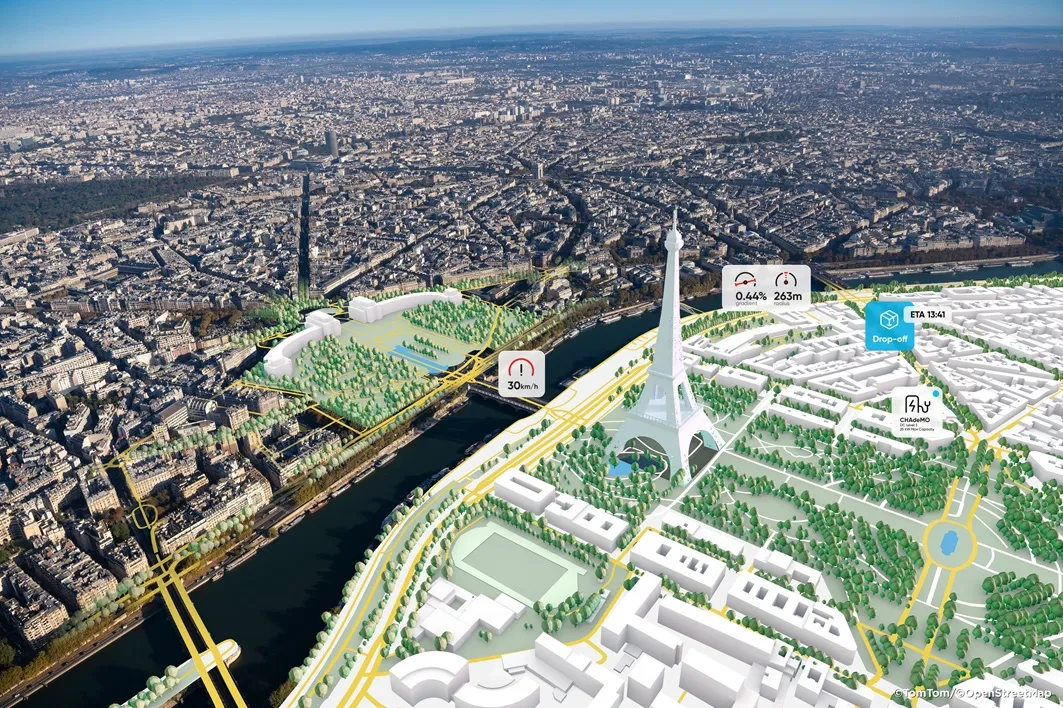
The gecko is one of several members of the lizard family which demonstrate autotomy: the ability to re-grow a tail or some other appendage lost during a time of peril. The GITA's GECCo programme is looking to give US infrastructures much the same capability
It's an unfortunate of life that the most important lessons can often only be learned as a consequence of bitter experience. Perhaps, though, the most important thing of all is that we do at least learn.
Mother Nature seems to have gone out of her way in recent years to demonstrate to us humans that no matter how far we advance technologically she can still bring us up short, often without warning and with devastating effect. Happily, the Geospatial Information System (GIS) community has been quick to learn from the spate of hurricanes, tsunamis and other major weather events which have wreaked so much havoc and cost so many lives. The result has been a range of GIS-based best practices which have done much to advance the state of the art of emergency response, damage recovery, and critical infrastructure protection.
The City of Tampa's Bob Austin, president of the Geospatial
Information & Technology Association (GITA), and EMA's vice president, Dave DiSera, himself a past president of the Association, can rattle off quite a number of ready examples of progress (see Sidebars). A point they make which often escapes those who've never had to cope with such an event is that a hurricane or major flood tends to wipe out completely any visible landmarks - signage, trees and even whole buildings can be affected. This makes working from common spatially enabled databases all the more important.
There are many drivers of GIS application development. From the public sector side, there is a desire to maintain a responsibility to citizens in the form of the provision of clean water, power, waste removal and emergency response, for example. The imperative from the private sector side tends to be more balance sheet-driven - if a cell phone tower or power station is out of action, then customers are no longer paying customers.
Hawaiian applications
Geo-location and its applications can take many forms.
For instance, one of the biggest issues facing the city and county of Honolulu is clearance of road debris arising from hurricane and other high wind events, says DiSera.
"There's a need there to get people out of town, and quickly. That requires the ability to rapidly identify the right equipment and roads, and to redeploy public transport assets to ensure evacuation. In turn, this requires that the city and county have a very good grasp of the transportation network and particularly road centreline data to support routing. Several years ago that was lacking but it's there now. It allows emergency managers to identify staging areas for clearance vehicles and for power generation equipment - one thing about Hawaii is that it doesn't have a networked power grid and an outage at one of the three primary power stations will wipe out the whole system island-wide. Once you lose power, you lose communications, the ability to pump water, lighting... it's important that everyone is working from the same data, therefore." Emergency management officials in Honolulu recently took the decision to radically overhaul how they respond to tsunami-type events, realising that a mass exodus might simply be unfeasible.
"This applies especially to tourists and non-locals in the Waikiki Beach area," DiSera continues. "There just may not be the time to get people out and up into the hills, so instead the plan is now to get people into higher-rise buildings and up onto the fifth floor or above. It's a dramatic change from what we've done before and requires an accurate log of all such facilities.
The Floridian experience
Tampa is plagued on a regular basis by hurricanes. That, says Austin, has led the city to create 'push maps' - "Literally, maps which show the roads which we'll push debris from. We also coordinate with neighbouring counties which share the same roads, again using common road centreline databases." Since Hurricane Katrina, Tampa sits in a Unified Area of Special Interest as defined by the Department of Homeland Security. As a part of the lessons learned, communications frequencies and systems have all been standardised but there have also been other changes on the mapping and data front, according to Austin.
"Post-Katrina, we've standardised on a civilian application of the US Army master maps. Pre-Katrina, GIS systems were using different data and so were non-compatible. Using a standardised US national grid takes us back to fundamental cartography and waypointing but just an hour's training will take operatives to a usable level of competency."
The GECCo programme
Nevertheless, there is significant merit in bringing both sides together and this has underpinned the thinking behind GITA's Geospatially Enabling Community Collaboration (GECCo) programme.
GECCo grew out of another world-changing event, 9/11. DiSera explains.
"We looked at how to get the various communities to collaborate. In the US, 85 per cent of all infrastructure is owned by the private sector and the private and public sectors simply haven't known how to communicate effectively. GECCo is looking to start that process.
"Collaboration can mean something as basic as each stakeholder having a current list of useful telephone numbers in other organisations but GECCo is looking to go take things to another level. What's very clear is that the more we can pre-plan for something the sooner and more effectively we can respond. Some of this stuff is quite basic - if you don't have power, you can't pump water and so on. Getting the different stakeholder communities together helps to develop the understanding of the interdependencies and so the level of response to critical events.
"Back in 2002, post 9/11, GITA looked at the lessons learned from the efforts to get communications, water and electricity working again. We also visited other countries such as Japan, which has a very well-developed response set-up, both above and below ground, as a consequence of a major natural disaster that resulted in a deadly gas explosion.
"GITA can't drive change top-down. What it can do is to get people talking at the local level. Many cities and counties run emergency preparation events but these don't, for example, include the utility companies. GECCo fills that gap."
GECCo was slow to take off but it has caught the attention of the
Outcomes
Austin provides two good examples of outcomes from GECCo's existence.
"Tampa has formed a regional GITA chapter as a result of GECCo. People have realised that they can make progress without direction from above. We've also been expanding the range of constituents to include, for instance, the Red Cross and regional planning agencies.
GITA has shared GECCo's work with the Federal Geographic Data Committee, demonstrating how federal and local agencies can share their data and improve the flows up and down between the two. The
GITA is also discussing a summit in Washington, DC with the
An omnipresent tool
The range of GIS applications which can be applied during and after major events touches on the emotions in all kinds of ways. One of the cheekiest and most smile-inducing is a bump application for smart phones.
DiSera: "This can be downloaded, then the motion sensors in the phone can be used to detect potholes. It's a passive way of allowing city crews to coordinate restoration efforts." On a slightly more serious level, and one which can be really quite emotive for damage assessors, is how GIS is being used to ascertain property damage levels and write-offs.
"It's very difficult for assessors working in an area which has been devastated to tell a family that they'll not be getting 100 per cent of the money they hoped for because of a damaged home - and anyway, how do you tell if a house is 95 per cent or totally written off? One application which grew out of Katrina will I think be best practice soon," says Austin.
"We have a Blue Roofs scheme whereby blue plastic sheeting is used to prevent moisture penetration of damaged housing. It's a very good visual clue for damage determination. Post-Hurricane Charlie, it took 18 months to assess 130,000 damaged homes. After Katrina, GIS was applied to base elevations and affected areas were overflown by aircraft equipped with LiDAR. The assumption was that if water levels were at 3ft above normal they'd probably been there for some time. Under current rules, 3ft of water for seven days is a total building write-off. In this way, we were able to assess 115,000 homes in just six weeks. Similarly, GIS has been used to drive oblique-angle photography efforts to show before and after the effects of weather events on hospitals, power plants and the like, and so where we need to concentrate our recovery efforts."










